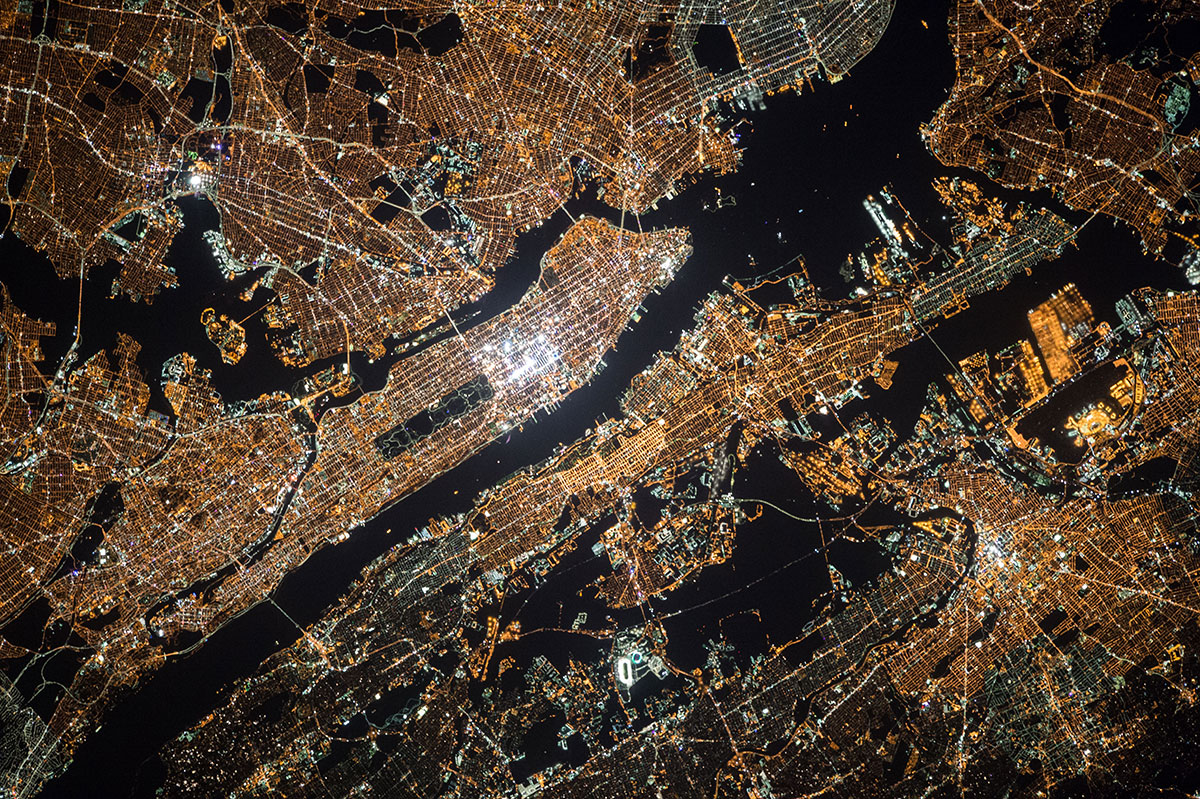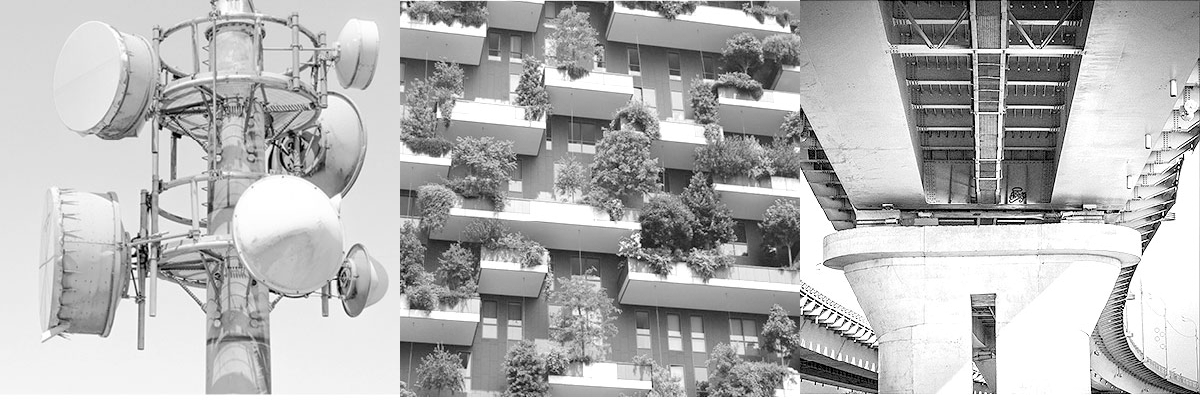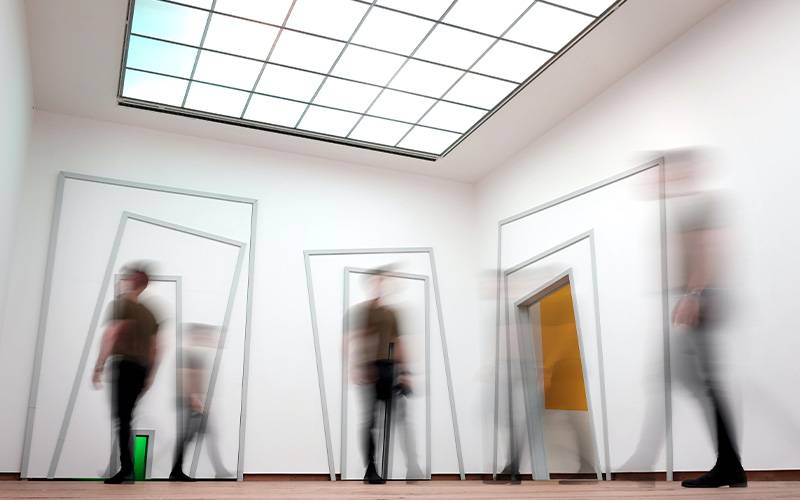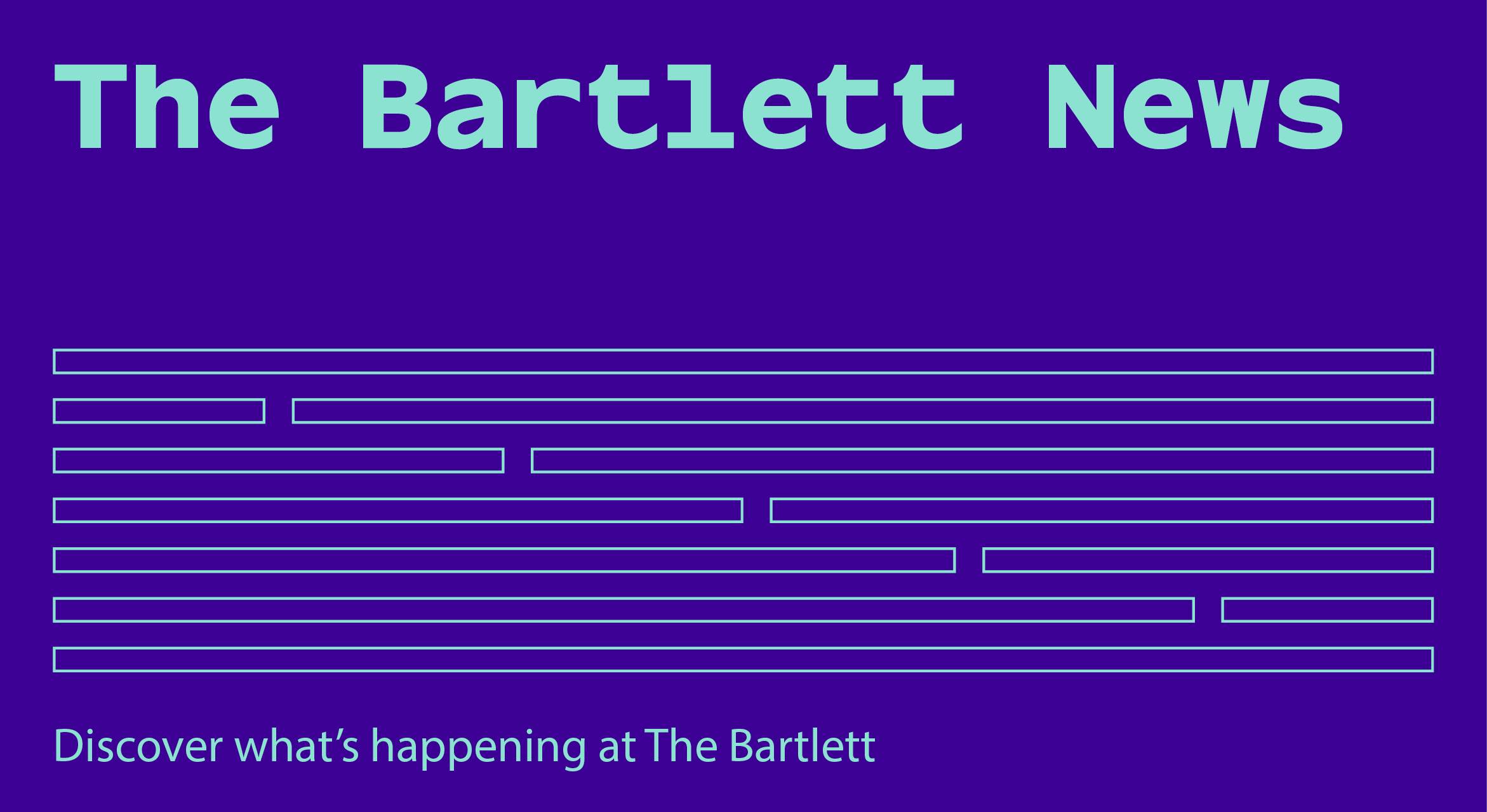Alan Penn asks: Why does our universe have just the right number of dimensions to allow us to tie knots? And does this hold the key to forecasting social and economic systems beyond ‘the singularity?

Satellite image of Manhattan, New York City, USA. Credit: NASA
How do we chart the possible future trajectories of society and the economy given accelerating technological innovation? This is one of the challenges of our age.
As we have moved from the Holocene epoch to the Anthropocene, innovation has led to the growth of the human species as well as its impact on the planet. Today, we see how the internet affects almost every aspect of our lives, from high streets to health services, but this is just the start. New materials such as graphene, and technologies such as the Internet of Things, the blockchain and artificial intelligence are coming out of the laboratory. These will create new businesses, services and jobs, and they will disrupt others. Above all, they create the potential for us either to reverse or to accelerate climate change. What we do will depend on our ability to forecast.
The advent of the digital economy has led some to suggest that we are in a transition from a pre- to a post-industrial era – that we are on the cusp of what Ray Kurzweil has called the ‘singularity’. Whatever one thinks of this, the way that firms and governments decide how best to prepare for disruptive change depends on their ability to forecast and model likely futures – something that has become virtually impossible as the rate of change outpaces our ability to theorise.
This poses a serious challenge for engineering in the design of transportation, communication and civil infrastructures; for business in making investment decisions; and for government as it decides how best to plan infrastructure investment and institutional structures to achieve policy objectives. Small differences in policy or investment today could lead to radically different future outcomes for society and the planet, and so it is urgent to understand the dynamics involved.
Forming the future
What if we could develop an entirely new approach to modelling and analysing this type of global system? The way that we build buildings and cities, the high-speed transport networks of trains and planes, and the almost instantaneous communication of the telephone and internet, all serve to shape the way that people meet and that society communicates and transacts. They are both the drivers and the products of innovation. These different kinds of infrastructure have a form, and this defines much of how the economy and society works. I believe we can map and model that form, and this may help us make the right decisions.
Fortunately, we inhabit a planet in the ‘Goldilocks zone’ – neither too hot nor too cold to support life, but just right. Previous stories in the Future Built Environment series have considered the effects of humanity in threatening that delicate balance. In a similar way, we inhabit a universe with just the right mathematical properties to support architecture and planning, and I would suggest, to support society and a political economy.

Three primary infrastructures support modern society: ICT, buildings and urban spaces, and transport technologies. Credits: Tony Stoddard, Chris Barbalis, Oleg Kuzmin for Unsplash
Our universe is Euclidean and this makes it orientable (if we happened to live in a Mobius strip universe there would be no left or right). It has just three spatial dimensions and this is exactly the right number to allow knots, but, importantly from an urban point of view, it allows us to have multi-storey buildings as well as tunnels and viaducts. And these are important, as they have allowed us to invent rapid transport systems that can overcome distance without severing the land through which they pass. The universe has just one time-dimension, and this is essential to allow causality. If our universe had fewer or more spatial or temporal dimensions none of this would be possible.
These abstract properties of the universe affect what we can construct, but also the dynamics of processes within those environments. They have shaped the patterns of development on the planet, and those patterns in turn shape what emerges next. The distribution of the internet and its servers largely reflects the distribution of populations from the pre-internet era. We construct new infrastructure to serve existing agglomerations of population. There is in effect a tremendous inertia exerted by our heritage, but that in turn reflects the underlying geometry and topology of the universe we inhabit.
My intention is to spend the next few years working on this project. We will be mapping the whole world in terms of these infrastructure and using that map to analyse the way that innovations diffuse. The model will be based on a mathematical object called a manifold, which consists of a surface in many dimensions: it can be smooth and allow smooth change as one moves over it, or it can be folded in such a way that one sometimes jumps from one part of the surface to another. These are the mathematics of physics and cosmology, but here we will apply them to the complex dynamics of human social, economic and political systems to help chart what might lie ahead on the other side of Kurzweil’s singularity. The use of this if it works – and there can never be any certainty in research that it will work – will be to help us nudge policy towards trajectories designed to keep our planet within the Goldilocks zone.
That I am thinking about a project that brings the infrastructures of building, transport and ICT together with social, political and economic systems, constructed on a mathematical basis, has a great deal to do with my 10 years as Dean of The Bartlett: this was the grit in the oyster for my own ideas. I see it as a decade of learning, exposed to and engaged with the full breadth of The Bartlett and UCL; the brilliance of my colleagues and nearly two centuries of thinking that has come before us.
Alan Penn was Dean of The Bartlett from 2009-2019
 Close
Close




